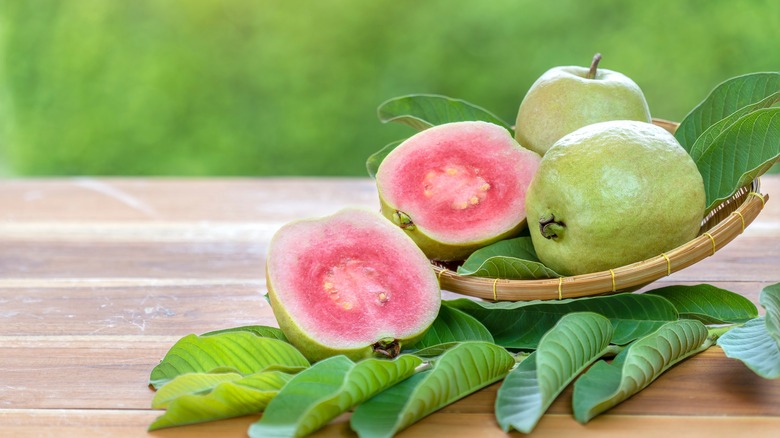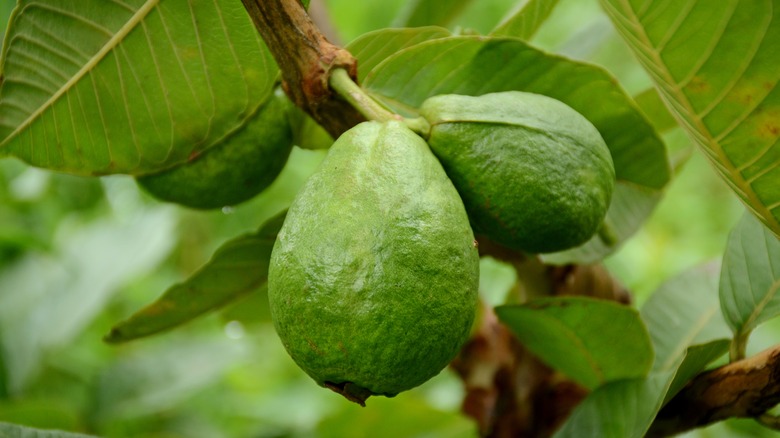Why You Should Start Eating The Rind On Guava
There was a time that many Americans only knew certain tropical fruits through labels and images on tropical-punch-flavored beverages or gummy snacks. However, in the 21st century, more people are partaking in enjoying certain tropical fruits that are being imported to the U.S., according to The Produce News. While certain fruits like bananas and pineapples have long been staples of American grocery stores, others, like dragon fruit and lychee, have enjoyed an increase in popularity in recent years.
However, because tropical fruits are a newer and growing part of American produce sections, many people don't know exactly how to eat some of these fruits. We can't blame you for Googling if the dragon fruit rind is edible (It is, by the way), or how to peel open lychee correctly. In the case of one such tropical fruit, guava is a great tropical fruit for beginners. This sweet and florally flavored fruit can be eaten raw, and you don't need to know much before diving in to take a bite.
While many people peel off the rind or remove the seeds, we recommend eating the fruit in its entirety for the best experience.
Guava rinds are nutritious
When picking out your guava, you'll want a rind that has a yellowish or pinkish green hue, which indicates a ripe fruit. You should also be able to smell the sweet scent before even cutting into the fruit, according to Epicurious. Once you're ready to indulge, you can simply rinse it and bite right in or slice it like an apple. While some people choose to peel the fruit and just eat the flesh, it's most nutritious to leave the rind on. In fact, the rind of the guava itself has more vitamin C than a whole orange, according to the site. Fine Dining Lovers also notes that a whole guava is also loaded with manganese, potassium, a high fiber content, and antioxidants.
Next time you're making a smoothie or need a refreshing healthy snack, guava is a great go-to option that needs little prep and makes you feel good inside.

